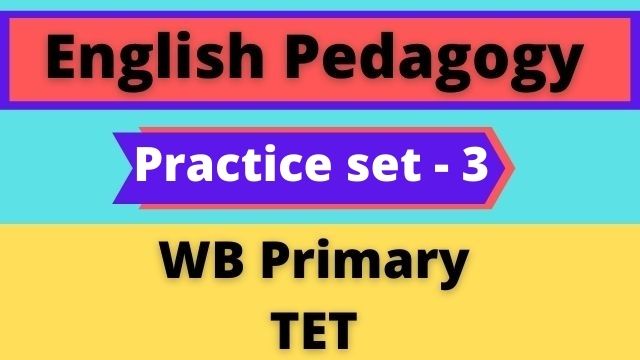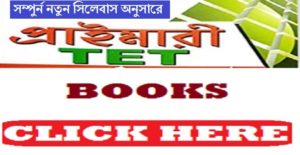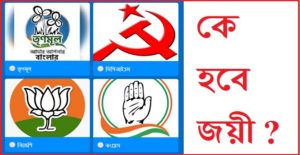
English Pedagogy – WB Primary TET Practice Set-3
1. A student is caught for mat practice. What will you do?
A.try to know the reason and being remedial teaching
B.punish him several
C.detain him in the same class
D.beat him
Ans. A.try to know the reason and being remedial teaching
2. When students learn a language for bright employment opportunities, their motivation is
A.extrinsic
B.intrinsic
C.exotic
D.eccentric
Ans. A.extrinsic
3. Deficiency of learning can be cured by
A.personal attention of the teacher
B.drill
C.Micro notes
D.all the above
Ans. D.all the above
4. A child centred classroom is characterized by
A.a variety of learning activities for the learners
B.children sitting in the centre of the classroom
C.children teaching other children under the supervision of the teacher
D.very passive teachers and active learners
Ans. A.a variety of learning activities for the learners
5. Knowledge gap occurs due to
A.lack of sincerity
B.lack of attention
C.long absence from school
D.lack of interest
Ans. C.long absence from school
6. Constructive approach to language teaching expects the teacher to
A.give pre constructed knowledge to learners
B.construct his own curriculum
C.Make learners prepare their own textbook
D.help construct knowledge using their experiences
Ans. D.help construct knowledge using their experiences
7. A student may resort to copying if he is
A.scolded
B.insulted
C.pressurised
D.beaten
Ans. C.pressurised
8. When a test item expects the leaders to use the tense forms, voice, connectors, prepositions and articles accurately, such an approach can be called
A.improper grammar testing
B.intergrated grammar testing
C.asserted grammar practice
D.mixed grammar task
Ans. B.intergrated grammar testing
9. The aim to of speak English should be….
A.ability to speak English fluently
B.attainment of a good working knowledge of English
C.write correct English
D.learn correct grammar
Ans. B.attainment of a good working knowledge of English
10. Which of the following is not a legitimate purpose of assessment in education
A.to find out to what extent curricular objectives have been achieved
B.ti identify individual and special needs of learners
C.to improve the teaching learning process
D.to rank the learners on the basis of marks
Ans. D.to rank the learners on the basis of marks
11. The structural approach is aimed at
A.learning grammatical structures
B.developing a sound vocabulary
C.teaching of structures through repeated drills
D.memorisation of sentence structures
Ans. C.teaching of structures through repeated drills
12. Comprehensive evaluation refers to assessment of
A.co curricular activities
B.academic subjects
C.both scholastic and co scholastic areas
D.summative assessment tests
Ans. C.both scholastic and co scholastic areas
13. The main objective of teaching English at the school level is
A.cultural
B.literary
C.conversational
D.linguistic
Ans. D.linguistic
14. A mixed ability group is heterogeneous in
A.economic status
B.gender and age
C.social start
D.knowledge and skill
Ans. A.economic status
15. The foundation skills for learning english are
A.to understand spoken english
B.to understand written english
C.to speak and write english
D.all the above
Ans. D.all the above
16. Teacher should not give corporal punishment to learners because
A.it makes parents very angry
B.it ir risky
C.it creates stress and rear in learners
D.it is only an emotional release for the teachers
Ans. C.it creates stress and rear in learners
17. The understanding of english requires
A.an active knowledge of english
B.a passive knowledge of the language
C.a direct knowledge of the language
D.an indirect knowledge of the language
Ans.B.a passive knowledge of the language
18. Pre reading tasks are meant for
A.evaluating the reading skill of the learners
B.giving the meaning of difficult words and phrases
C.introducting the main idea and motivating the learners
D.explaining the grammatical items used in the reading text
Ans. C.introducting the main idea and motivating the learners
19. The speaking english of english requires
A.knowledge of english grammar
B.a good vocabulary
C.an active knowledge
D.correct pronunciation
Ans. C.an active knowledge
20. When a teacher asks her students to write a letter after having a group discussion, she is
A.adopting the direct method of language teaching
B.intergrating different language skill
C.following a traditional method
D.likely to confuse the students
Ans. B.intergrating different language skill
21. The linguistic aim of teaching english is
A.a practical command of both spoken and written english
B.to develop ability to appreciate literature
C.to enable students to appreciate english culture
D.to argue and debate in correct english
Ans. A.a practical command of both spoken and written english
22. Speaking skill can be best developed by enabling the learners to
A.read challenging and difficulty texts
B.communicate in real life situations
C.listen to the model provided by the teacher
D.avoid all errors while speaking
Ans. B.communicate in real life situations
23. The literary aim of teaching english is
A.to motivate pupils to read english
B.to induce students to give up use of mother tongue
C.to try to give students a taste for reading english
D.to enable pupils to write lottery english
Ans. C.to try to give students a taste for reading english
24. Curriculum is an educational programme which does not state
A.the lesson planning details of the topic
B.the educational purpose of the programme
C.the content teaching and learning experience which will be necessary to achieve this purpose
D.the means of evaluating where these educational ends have been achieved or not
Ans. A.the lesson planning details of the topic
25. The four types of language activities in order of priority are
A.reading, writing, speaking and listening
B.speaking, reading , listening, writing
C.writing , reading speaking, listening
D.listening, speaking, reading, writing
Ans. D.listening, speaking, reading, writing
26. A good test on reading comprehension will have questions
A.that focus primarily on the structures and words used in the text
B.that test the textual knowledge thoroughly
C.that encourage learners bro write answers without errors
D.that test inference, interpretation and evaluation beside comprehension
Ans. D.that test inference, interpretation and evaluation beside comprehension
27. At the initial stage, english should be regarded only
A.as a content subject
B.as a skill subject
C.as a subject for literary appreciation
D.as a theoretical subject
Ans. B.as a skill subject
28. Teaching grammar is useful to improve
A.accuracy
B.fluency
C.literacy
D.numeracy
Ans. A.accuracy
29. At the initial stage, the teacher should give maximum emphasis
A.on rote learning
B.on practice in writing the language
C.on speaking the language
D.on memorisation
Ans. C.on speaking the language
30. Picture comprehensive is effective to promote
A.artistic skill
B.speaking skill
C.listening skill
D.literary skill
Ans. A.artistic skill
31. The pupil’s ability to speak his mother tongue well will
A.hinder his ability to speak english
B.help his ability to speak english
C.neither help nor hinder his ability to speak english
D.affect his speaking ability
Ans. B.help his ability to speak english
32. Seating arrangement should be flexible in a language classroom because
A.it facilitate pair work and group work
B.it reduces the responsibility of his teacher
C.it helps the teacher in maintaining discipline
D.it helps learners change their places frequently
Ans. A.it facilitate pair work and group work
33. To make the learning of a foreign language interesting , it should be taught
A.in connection with the foreign environment
B.in connection with the national environment
C.in connection with the pupil’s life
D.in connection with the teacher’s life
Ans. C.in connection with the pupil’s life
34. Learners acquire a language by
A.useing the language in a natural interactive environment
B.analyzing the literature of the language
C.studying about the culture of the speakers of that language
D.studying the literature of the language
Ans. A.useing the language in a natural interactive environment
35. At present english is taught in school through the
A.formal cognitive method
B.cognitive dissonance method
C.functional communicate method
D.comprehension method
Ans. C.functional communicate method
36. The most important feature of an effective language classroom is opportunity for learners to
A.relax
B.interact
C.evaluate
D.imitate
Ans. B.interact
37. A foreign language is best learnt through
A.retention
B.comprehension
C.rotation
D.practice
Ans. D.practice
38. In learning a new language, multilingualism is
A.a methodology
B.an asset
C.an interference
D.a burden
Ans. B.an asset
39. Grammar translation method stresses on
A.fluency of speech
B.accurancy
C.retention
D.memorisation
Ans. B.accurancy
40. Which of the following will help learners take greater responsibility for their own learning
A.controlled writing tasks
B.peer assessment
C.summative assessment
D.supervised assessment
Ans. C.summative assessment
41. Direct method is also known as
A.natural method
B.deductive method
C.structural approach
D.comprehensive approach
Ans. A.natural method
42. The main purpose of assessment is
A.to give practice in writing
B.to improve the teaching learning process
C.to decide pass and fail
D.to measure achievement of learners
Ans. B.to improve the teaching learning process
43. Direct method is aimed at
A.increasing power of comprehension
B.developing personality
C.developing a command over the target language
D.increasing power of retention
Ans. C.developing a command over the target language
44. When young learners are taught to improve their spelling and punctuation, they will
A.nurture their creativity
B.sharpen their listening skill
C.improve their accuracy
D.enhance their fluency
Ans. C.improve their accuracy
45. Correlative method is called
A.structural method
B.referance method
C.deductive method
D.inductive method
Ans. B.referance method
46. Reading between the lines as a sub skill of reading mainly involves
A.giving sufficient space between lines
B.inferring the unstated using the contextual and verbal clues
C.identifying the grammatical item
D.understanding the stated facts
Ans. B.inferring the unstated using the contextual and verbal clues
47. perspective grammar is also called
A.traditional
B.conventional
C.accusative
D.formal
Ans. D.formal
48. Young learners will enjoy a play included in the text book when they
A.enact the play
B.get detailed explanation about the play from the teacher
C.read the play silently
D.listen to the teacher reading the play
Ans. A.enact the play
49. ‘Acquisition’ in pedagogy means
A.acquiring good notes for examination
B.going through the process of learning
C.securing high marks in examination
D.acquiring all the language skills
Ans. D.acquiring all the language skills
50. Correct speech habits can be developed most effectively through
A.vocabulary practice
B.quizzes
C.dictation
D.pronunciation practice
Ans. D.pronunciation practice




